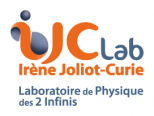LiteBIRD
In recent years, the measurement of the anisotropies of the cosmic microwave background (CMB) has become one of the essential probes for testing cosmological models. The results of the Planck mission have confirmed the Big-Bang theory and reinforced the hypothesis of an inflationary phase during the primordial universe. The CMB experiments are now tackling the detection of primordial gravitational waves within the B-modes of polarization anisotropies. The observation of such a signal would allow to further constrain the inflationary scenarios, through the estimation of the tensor-to-scalar ratio (noted “r”), which is directly related to the inflation energy scale.
The difficulty of these measurements lies in the very small amplitude of the expected signal (more than 4 orders of magnitude smaller than that of the CMB temperature anisotropies) which makes it a formidable experimental challenge. The extraction of such a signal requires an excellent sensitivity, a very precise subtraction of galactic contaminations, as well as a precise control of the instrumental systematics.
To achieve these goals, the international LiteBIRD mission proposes a design that emphasizes the control of systematic effects while taking advantage of the benefits of space-based observation (all-sky observations giving access to the large scales and to a large frequency range needed to characterize foregrounds). With about 5000 high sensitivity detectors, LiteBIRD aims at detecting the amplitude of tensor modes with an accuracy of 1 per thousand.
The medium and high frequency instrument of LiteBIRD (MHFT) is under the responsibility of CNES, in phase A (feasibility study), with an important participation of French laboratories. In particular, IJClab is in charge of the mechanical design of the MFT and the HFT (in collaboration of our colleagues from IRAP and APC), as well as the calibration.
The team is also involved in the study of Inflationnary models (in particular based on supersymmetric theory through joint work with theorists and particle physicists) and on the reionization history of the Universe.









